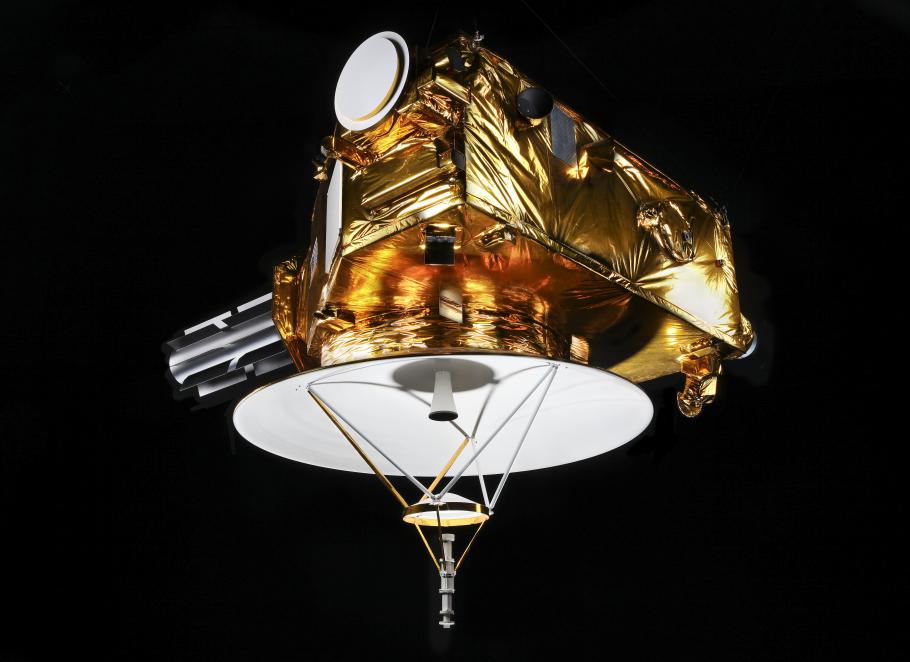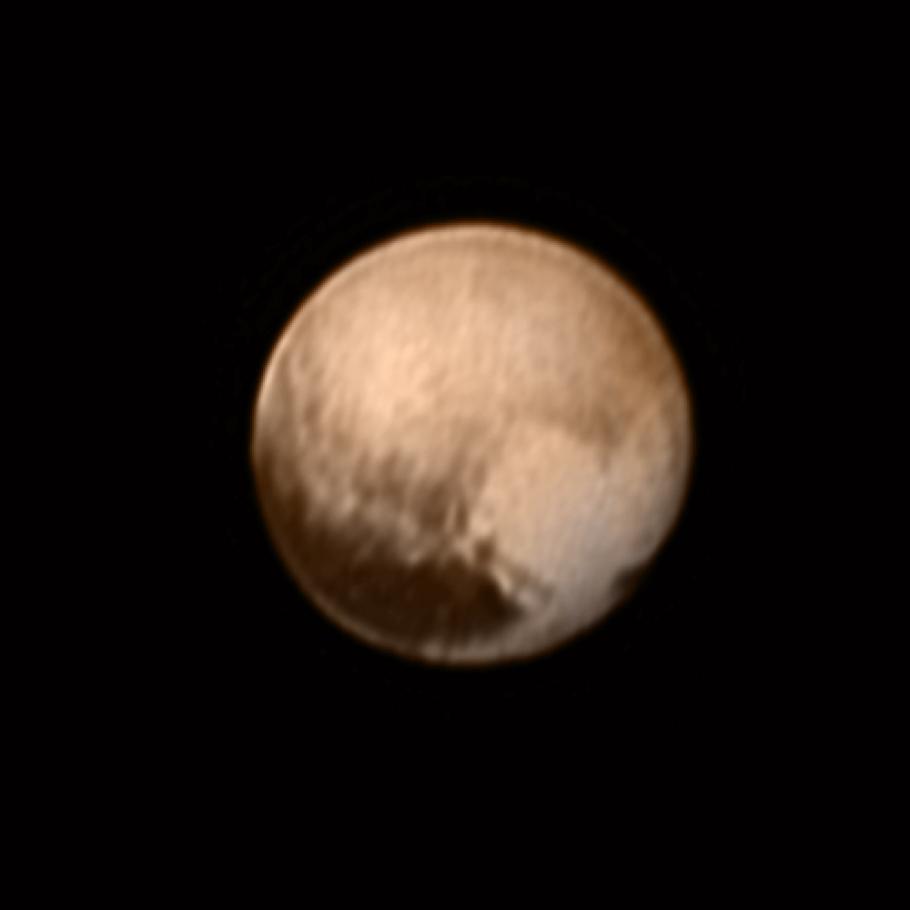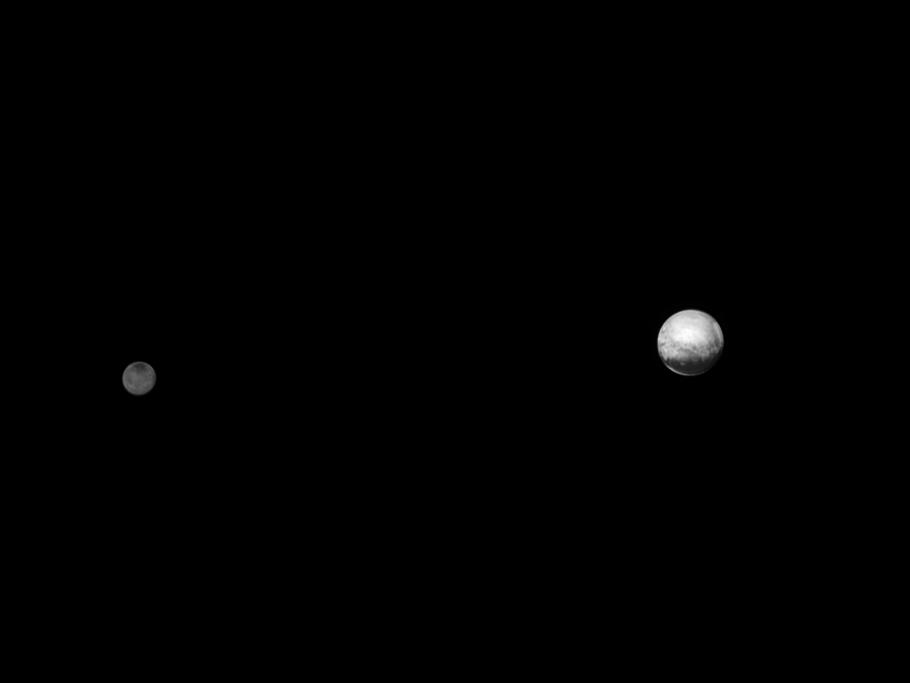As we await the exciting results of New Horizons’ flyby of Pluto on July 14, it is all too easy to think that this mission was inevitable: the capstone to NASA’s spectacular exploration of all the planets (and ex-planets) of the solar system since the 1960s. Yet, it proved extraordinarily difficult to sustain a Pluto project. NASA discarded several proposals in the 1990s and canceled the program outright three times in the early 2000s. Each time it was revived thanks to intervention by advocates, politicians, and the public.
The first discussions of exploring Pluto took place in the late sixties and early seventies, in connection with a possible “Grand Tour” of the outer planets, thanks to their fortuitous alignment a decade later. Two Voyager spacecraft eventually visited Jupiter, Saturn, Uranus, and Neptune, but neither of them could make it to Pluto. Not much was known about it anyway, except that, as astronomical instrumentation improved, it kept shrinking in size and mass. A couple of space physicists published a tongue-in-cheek scientific article that, based on slope of the graph, Pluto would disappear by the early 1980s! Critical to an accurate determination of its size was the U.S. Naval Observatory’s discovery of a large satellite, named Charon, in 1978. It turned out to be 1,200 km (approximately 746 miles) in diameter, fully half the size of the primary (the Earth’s Moon is 3,475 km, 2,159 miles). By sheer luck, in 1985 the two began eclipsing each other for a few years, which greatly aided understanding them and helped confirm that Pluto had an atmosphere.
In 1989, as Voyager 2 approached and then passed Neptune, lobbying for a Pluto mission began, impelled by the exciting new science. Taking the lead was an astronomer then finishing his PhD, Alan Stern, who today is the Principal Investigator (mission leader) of New Horizons. He helped form a “Pluto Underground” of mostly young scientist-advocates. Leaders in NASA’s space science directorate were sympathetic. In the early 1990s, two proposals for increasingly ambitious spacecraft arose, only to be replaced in 1992 by a miniaturized lightweight probe called Pluto Fast Flyby. It was the brainchild of Robert Staehle, an engineer at the Jet Propulsion Laboratory (JPL) in Pasadena, California (NASA’s main planetary spacecraft center). He had succeeded in securing the interest of the agency’s new administrator, Daniel Goldin, who came into office determined to force a technical revolution in the planetary program. Billion-dollar-class spacecraft were to be discarded in favor of small, “faster, better, cheaper” missions.
Pluto Fast Flyby became a JPL project, but it stalled in the mid-nineties. A fundamental problem was that no matter how small the spacecraft, Pluto was so distant that a powerful and expensive booster was required. Goldin said NASA could not afford it. Between 1994 and 1997 Stern, now at Southwest Research Institute, tried to get a Russian launch, but technical and money problems in their program caused that idea to die slowly. Constant spacecraft redesign led to two changes of name, the last being the Pluto Kuiper Express (PKE), reflecting growing interest in the Kuiper Belt of icy bodies beyond Neptune, of which Pluto was now the largest object. In the late nineties, PKE was moved into a joint program with probes to the Jovian moon Europa and to the Sun. All were to go around Jupiter (which would come into position to give a gravity assist to Pluto around 2003). But in September 2000, large cost overruns in the joint program led NASA’s space science chief, Edward Weiler, to kill PKE in favor of the Europa mission, which apparently had more political support.
The Planetary Society led a public campaign against the cancellation, but what really moved Weiler was a rebellion in the planetary science community. Nobody was against Europa, but there were compelling reasons why Pluto was more urgent: its atmosphere might “snow out” as it moved into a more distant part of its orbit, every passing year meant more of the planet going into a decades-long night, and a Jupiter gravity-assist opportunity would disappear for a decade after 2006. In December 2000, Weiler revived the idea, now as a competition open to groups beyond JPL for a program of under $500 million. But when the George W. Bush Administration came into office a month later, its budget office promptly cancelled Pluto in favor of Europa.
Over Christmas, Alan Stern had teamed with the Johns Hopkins University’s Applied Physics Laboratory (APL) in Laurel, Maryland. APL’s Space Department, led by pioneering space physicist Stamatios Krimigis, was in the final stages of NASA’s highly successful, low-cost NEAR Shoemaker mission to the asteroid Eros. Krimigis (who won the National Air and Space Museum Trophy for Lifetime Achievement in 2015) had cultivated very strong political connections, notably to Maryland’s Senator Barbara Mikulski. She forced NASA to complete the competition. In November 2001, the agency announced that Stern’s New Horizons proposal had won over a competing JPL one. But when the new federal budget came out in January 2002, the Bush Administration cancelled Pluto again. Sen. Mikulski engineered another budget extension, giving New Horizons the chance to complete a more thorough technical review. That summer, the National Academy of Sciences released a “decadal survey” of planetary science priorities; it listed a Kuiper Belt mission as highly desirable. Bush’s budget office and NASA (which had no choice but to follow its direction) finally gave in. In early 2003, New Horizons was at last officially approved.
That was a great victory for the perseverance of Stern and other Pluto advocates, but it was not the end of the program’s perilous course. It endured a shortage of plutonium for its radioisotope power generators and a crisis over whether its Atlas V booster could be certified for flight. But on January 19, 2006, New Horizons became the fastest object ever launched (it passed the Moon's orbit in nine hours!), on its way to Jupiter a year later. Yet it still has taken it nearly a decade to reach the Pluto system, which is now 32 times Earth’s distance from the Sun. All indications are that it will be the spectacular scientific success Pluto advocates have long promised.
For an in-depth examination of the above story, see his “First Mission to Pluto: Policy, Politics, Science, and Technology in the Origins of New Horizons, 1989-2003,” Historical Studies in the Natural Sciences 44 (2014), 234-276.



